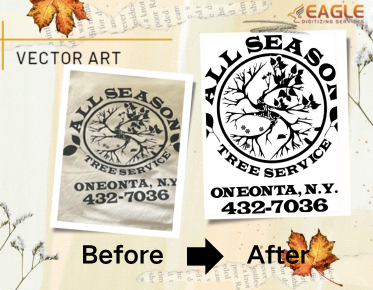When to Use SVG: Smart Practices and Applications
ScalableVector Graphics (SVG) are revolutionizing how we approach web design and digital graphics,
offering unmatched versatility and quality. This article’ll discuss smart
practices for utilizing SVG in your projects, from web development to graphic
design. We’ll also explore various applications where SVG can enhance user
experience and performance, making it a go-to choice for modern creatives.
Whether you're a designer, developer, or business owner, understanding when and
how to use SVG can elevate your visual content and streamline your workflows.
The Rise of SVG: Why It's Taking Over the Web
The digital
landscape is rapidly evolving, and the demand for high-quality visuals is
surging. SVG is riding this wave, increasingly favored for its versatility and
efficiency. As websites become more complex and user expectations rise, the
ability to create sharp, scalable graphics that enhance usability has never
been more critical. From intricate icons to elaborate animations, SVG has
proven to be a game-changer, facilitating faster load times and smoother
interactions. As a result, it’s quickly becoming the go-to format for web
developers and designers alike.
Understanding SVG: The Basics
What
Makes SVG Unique? Exploring Vector Graphics
SVG stands apart
due to its vector nature. Unlike raster images, which are made up of pixels and
can become blurry when scaled, SVG graphics are composed of paths defined by
mathematical expressions. This allows them to maintain pristine quality at any
size—be it a tiny icon or a sprawling banner. The result? Crisp, clear visuals
that enhance the user experience. Additionally, SVG files are typically smaller
than their raster counterparts, providing another layer of efficiency.
SVG
vs. Other Image Formats: Why Choose SVG?
When comparing
SVG to other formats, its advantages are striking. JPEG and PNG formats are
common choices, but they come with limitations, such as pixelation and fixed
sizes. SVG, on the other hand, offers unmatched scalability and responsiveness,
making it ideal for a variety of applications. Moreover, SVG files can be
manipulated via CSS and JavaScript, allowing for dynamic effects and
interactivity that static images simply can’t match. When it comes to web
graphics, SVG is undoubtedly the superior choice.
How
SVG Files Are Structured: A Peek Under the Hood
Delving into the
structure of SVG files reveals their inherent simplicity. An SVG file consists
of a series of XML-based markup elements that describe the shapes, colors, and
behaviors of the graphic. Elements like `<circle>`, `<rect>`, and
`<path>` define the shapes, while attributes control the appearance, such
as `fill`, `stroke`, and `opacity`. This straightforward structure not only
makes SVG files easy to read but also enables developers to customize and
animate graphics effortlessly.
When to Use SVG: Ideal Scenarios
Responsive
Design: Why SVG is Perfect for Mobile
In a world where
mobile devices rule, responsive design is essential. SVG excels in this arena,
allowing graphics to scale seamlessly across various screen sizes. Whether it's
a smartphone, tablet, or desktop, SVG maintains clarity and precision, ensuring
a consistent user experience. This adaptability is crucial for designers
striving to create fluid, mobile-friendly interfaces that captivate users.
When
You Need Scalability: The Benefits of Vector Graphics
Scalability is
one of SVG’s standout features. Unlike raster images, which can become
pixelated when enlarged, SVGs retain their sharpness regardless of size. This
is particularly advantageous for logos and branding materials that need to be
displayed across multiple formats, from business cards to billboards. With SVG,
the fear of losing quality is eliminated, allowing for versatile applications
across diverse media.
Enhancing
Web Performance: Load Times and Efficiency
A key component
of user satisfaction is web performance. SVG files are generally smaller than
raster images, which translates to faster load times and reduced bandwidth
consumption. This efficiency can significantly enhance the overall performance
of a website, improving SEO rankings and user engagement. By leveraging SVG,
developers can ensure that their sites are not only visually appealing but also
swift and efficient.
Best Practices for Implementing SVG
Optimizing
SVG Files: Size Matters!
While SVGs are
inherently efficient, optimizing them further is crucial for performance. Tools
like SVGO can reduce file size without compromising quality by removing
unnecessary metadata and simplifying shapes. Keeping SVG files lean not only
improves load times but also enhances the overall user experience, ensuring
your website runs smoothly.
Accessibility
in SVG: Ensuring Everyone Can Enjoy Your Graphics
Creating
inclusive digital experiences is vital. When implementing SVG, consider
accessibility best practices. Use `title` and `desc` elements within your SVG
code to provide context for screen readers, making your graphics accessible to
visually impaired users. By prioritizing accessibility, designers ensure that
everyone can appreciate and interact with their content.
How
to Embed SVGs: Best Methods Explained
There are several
effective ways to embed SVGs in your web projects. The simplest method is using
the `<img>` tag, but this approach limits interactivity. For greater
control, consider inline SVG, which allows you to manipulate styles and
behaviors directly with CSS and JavaScript. Alternatively, use the
`<object>` or `<embed>` tags for more complex integrations. Choose
the method that aligns with your project’s needs and desired functionality.
SVG in Web Design: Enhancing User Experience
Using
SVG for Icons: A Clean and Modern Approach
Icons are
integral to user interfaces, guiding users through navigation and actions. SVG
provides a modern approach to iconography, enabling designers to create crisp,
scalable icons that enhance usability. With their clean lines and flexibility,
SVG icons seamlessly integrate into any design, providing an intuitive user
experience.
SVG
Animations: Adding Life to Your Website
Animations
breathe life into static designs, and SVG is a perfect medium for this purpose.
By leveraging CSS animations or JavaScript, designers can create dynamic,
eye-catching animations that engage users. From subtle hover effects to complex
transitions, SVG animations elevate user interaction, making websites feel more
alive and responsive.
Backgrounds
and Overlays: Creative Uses of SVG
SVGs can also
serve as backgrounds and overlays, adding depth and texture to your design.
Using SVG patterns or gradients, designers can
create visually stunning backdrops that enhance the overall aesthetic of a
webpage. This creative application showcases the versatility of SVG,
transforming ordinary layouts into captivating experiences.
Creating Stunning Graphics with SVG
Designing
Custom Logos: Why SVG is the Way to Go
Logos are the
visual cornerstone of a brand, and designing them in SVG ensures they are
always presented in the best light. The scalability of SVG means logos will
look impeccable at any size, whether on a business card or a massive billboard.
Moreover, SVG logos can be easily animated, adding an extra layer of creativity
that can set a brand apart.
Illustrations
and Infographics: Making Data Pop with SVG
SVG is a
fantastic choice for illustrations and infographics, allowing designers to
create vibrant, interactive visualizations. The ability to scale without losing
quality makes SVG ideal for detailed graphics that need to retain clarity at
various sizes. Infographics crafted in SVG can incorporate animations,
enhancing engagement and making complex data more digestible for users.
Typography
in SVG: Custom Fonts for Unique Designs
SVG also opens up
new possibilities for typography. Custom fonts can be embedded within SVG
files, allowing for unique typographic designs that stand out. This capability
enables designers to create distinctive text elements that complement their
graphics, resulting in a cohesive and visually striking design.
SVG in Application Development
Integrating
SVG into Web Apps: A Developer's Guide
For developers,
integrating SVG into web applications offers numerous advantages. SVG files can
be easily manipulated with JavaScript, allowing for dynamic graphics that
respond to user interactions. Whether creating charts, icons, or illustrations,
SVG provides the flexibility to enhance the user interface and improve overall
functionality.
Using
SVG for Charts and Graphs: Visualizing Data Effectively
Data
visualization is essential for understanding complex information, and SVG is an
ideal format for charts and graphs. With libraries like D3.js, developers can
create interactive visualizations that adjust in real-time. SVG’s scalability
ensures that these visual representations remain clear and precise, making data
easier to interpret and engage with.
SVG
in Mobile Applications: Benefits for Developers
Mobile
applications benefit significantly from SVG graphics. Their small file sizes
and scalability ensure that apps run smoothly across different devices. SVG can
adapt to various screen resolutions, providing a crisp and polished appearance
on smartphones and tablets alike. For developers, this translates into enhanced
performance and improved user satisfaction.
Common Challenges and Solutions
Browser
Compatibility: Ensuring SVG Works Everywhere
While SVG is
widely supported, compatibility issues can be across different browsers and
devices. To ensure a seamless experience, it’s crucial to test SVG graphics on
various platforms. Utilizing fallbacks for older browsers, such as PNG versions
of graphics, can help mitigate issues while maintaining functionality.
Debugging
SVG: Common Issues and How to Fix Them
Debugging SVG can
be tricky, but common issues often stem from incorrect syntax or unsupported
features. Browser developer tools can help pinpoint problems, allowing for
quick fixes. Familiarizing yourself with SVG specifications will also help
avoid common pitfalls, ensuring a smoother development process.
Security
Concerns with SVG: What You Need to Know
As with any web
technology, security is paramount. SVG files can potentially contain malicious
code, making it essential to sanitize and validate SVG inputs in applications.
Implementing best practices for security will help protect your users and
maintain the integrity of your web applications.
SVG offers a wealth of opportunities for creativity and efficiency. Whether you’re designing a website, creating applications, or crafting stunninggraphics, SVG can enhance your projects in myriad ways. By embracing SVG, you contribute to a richer, more visually appealing web that captivates and retains users.



